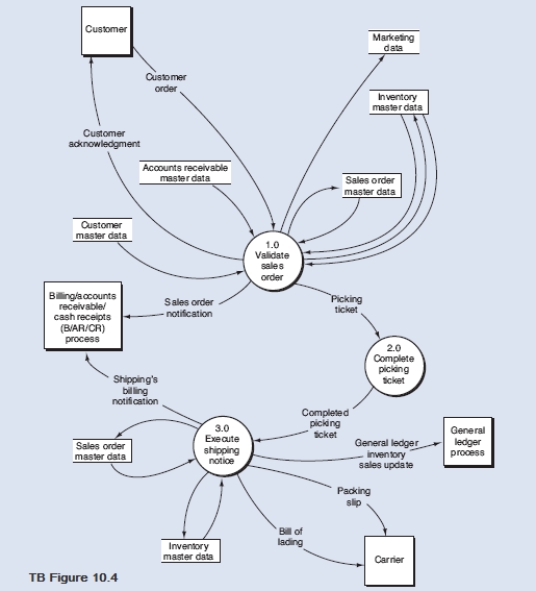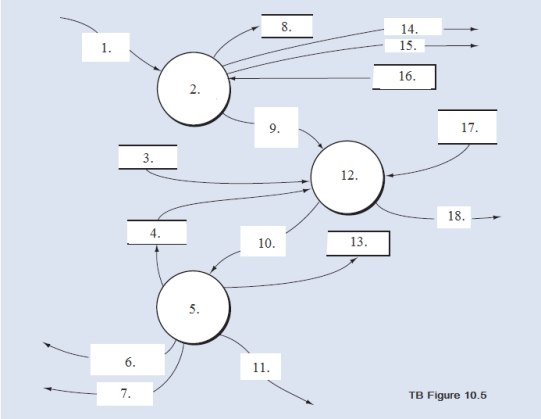Below is a narrative of the "Validate sales order" portion of the order entry/sales process.Narrative Description
How does the OE/S process then validate a customer order? First, process 1.1 verifies the availability of the requested inventory by consulting the inventory master data.If a sufficient level of inventory is on hand to satisfy the request, the order is forwarded for further processing, as depicted by the data flow "Inventory available order." Conversely, if a customer orders goods that are not in stock, process
1.1 runs a special back order routine.This routine determines the inventory requirement necessary to satisfy the order and then sends the back order request to the purchasing department.This activity is depicted by the "Back order" data flow, which in reality is a specific type of exception routine (i.e., a specific type of reject stub).After the goods are received, the order is routinely processed.If the customer refuses to accept a back order, then the sales event is terminated, and the order is rejected, as shown by the "Reject" data flow.Information from the order that has potential value to marketing is recorded in the marketing data store.After assuring inventory availability, process 1.2 establishes the customer's existence and then evaluates credit.With an enterprise system, one record should exist for each customer, wherever the customer is located and from whatever parts of the organization the customer makes purchases.This allows an organization to readily determine the amount of credit available to that customer worldwide.The credit check adds the amount of the order to accounts receivable balances, open sales orders (i.e., orders about to be receivables), and compare that total to the credit limit.If the customer has exceeded their credit limit, the order is rejected.Upon a successful credit approval, process 1.3 performs the following activities simultaneously:
-Updates the inventory master data to allocate the quantity ordered to the sales order.The inventory balance could actually be reduced at this time to save a later update of the inventory master data.-Updates the sales order master data to indicate that a completed sales order has been created.-Disseminates the sales order.Required: From the DFD in TB Figure 10.4 and the narrative description above, explode bubble 1.0 into a lower-level diagram showing the details of that process by identifying the words that belong in items 1.to 18 (TB Figure 10.5). 

Definitions:
Treatment Groups
In clinical trials, groups of participants receiving the intervention or treatment being studied, as opposed to control groups.
Odds Ratio
A measure of association between an exposure and an outcome, indicating the odds of an outcome occurring in an exposed group compared to a non-exposed group.
Case-Control Study
A type of observational study that compares individuals with a specific condition (cases) to those without it (controls) to identify risk factors or outcomes.
Exposure Status
The classification of individuals based on their encountered level of a particular factor, substance, or environmental condition that may influence their health.
Q6: In the ER diagram of the AP/CD
Q8: Below is a list of control goals
Q20: The _ process is an interacting structure
Q38: The purpose of _ control goals is
Q73: Wages taxable under FICA are reported on
Q97: The use of IT resources for enterprise
Q98: Which of the following is based on
Q101: The two types of accounts receivable systems
Q126: Dollar totals represent a summarization of any
Q127: A(n) _ is a form of payment